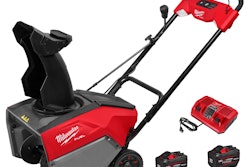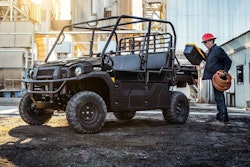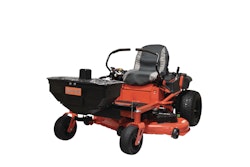Conserve, conserve, conserve. Landscapers are supposed to heed this motto at all times, but are you passing the message on to your customers? July is the Irrigation Association’s Smart Irrigation Month and it’s all about getting the word out to landscapers so they can educate themselves and homeowners, about conservation according to Jeff Carowitz, chairman of the communications committee, IA. Whether you’re helping customers upgrade an irrigation system to be more efficient or learning new water conservation techniques, Smart Irrigation Month has tips everyone can use.
The IA observed its first Smart Irrigation Month in June 2006. This year, Carowitz says the association plans to increase promotion by offering pamphlets for manufacturers and other members to hand out to their customers and having members host onsite seminars.
“When homeowners are better educated they will be more likely to talk to landscaping contractors about improving their systems,” Carowitz says.
Sensory appeal
With so many irrigation products on the market right now, it’s easy for customers to become overwhelmed and miss out on what’s best for their specific needs, industry experts say. “There are a lot of different rain sensors, moisture sensors and controllers out there,” Carowitz notes. Since some of these can cost significantly more than others, landscapers should explain the cost of ownership to their customers. As Carowitz says, “If the system is managing itself then it’s paying for itself.”
In an attempt to help recognize proven water-efficient products, the IA partnered with other irrigation representatives around the world, as well as water purveyors to create the Smart Water Application Technologies program (SWAT). This organization performs third-party testing of potential water-saving products and helps promote member companies with innovative technology.
Weather-based irrigation controllers and rain sensors have both been tested and approved by the IA. According to the association, weather-based controllers – or smart controllers – schedule irrigation based on information entered into the system relating to site conditions. Rain sensors are a type of environmental sensor that, according to the Professional Landcare Network’s Maintenance Training Manual, interfaces with controllers to shut down an irrigation system when water isn’t necessary. Carowtiz says these are relatively inexpensive and are required by law in some states.
Eric Anderson, president of Valley Soil, a water conservation company in Temeculah, California, says using rain sensors with a weather-based controller will cause the irrigation system to shut off more quickly as opposed to one without sensors. The system will then start back up once the rain has ceased, while systems lacking rain sensors will result in the controller experiencing a one-day delay.
In contrast, moisture sensors measure water held in the root zone. Anderson says that while these sensors can be beneficial they can also require high maintenance, so it’s best for landscapers to pick components that fit individual needs. While a large company might have a crew to adjust these sensors and modify the system- which will need occasional adjustments – it might be difficult for a homeowner to remember to reposition the sensors periodically.
Controllers, then, are not just based on timing but also rely on weather and sensor data to monitor the schedule, moisture levels and weather conditions. “By being dynamic, these products are able to save water by not watering when it’s not needed,” Carowitz says.
“It would be nice to water a yard every day for 30 minutes, but some days it needs more and some days it needs nothing,” he says. “There are all sorts of ways to conserve water and we hope this month captures people’s attention.” TLC
Here are a few Web sites to further your water conservation knowledge:
www.irrigation.org/SIM – Industry professionals can learn how to support Smart Irrigation Month and also obtain resources such as EPA watering tips and articles on improving irrigation systems.
www.smartirrigationmonth.org – Designed for homeowners, this link provides tips, tools and ideas for water conservation from the Irrigation Association.
www.irrigation.org/swat/industry – Both industry groups and homeowners can learn about products that employ SWAT through this site.
www.rainbird.com/iuow/whitepapers.htm – According to Rain Bird, these papers explore causes and potential solutions to the growing global water crisis and have been provided to academics, municipal water managers, government officials, students and homeowners free of charge.
–Barbara Ibrahim
Improve the health of turf and plants
With an effective range of 13 to 24 feet, Rain Bird’s multi-stream, rotating nozzles fit the needs of smaller yards and landscapes. The nozzles combine the water efficiency of a rotor and the reliability of a spray by fitting on conventional spray bodies but transforming the spray into a rotor. These “sprotors” give landscapers the ability to irrigate more efficiently and establish deeper root systems while reducing run-off and water waste.
Trencher makes irrigation system installation easy
A patented floating cutting blade and dual discharge system on For the Edge’s Trench ‘N Edge trencher makes it simple to install subsurface drip irrigation systems by discharging the trenched materials directly onto tarps for easy cleanup. The unit cuts a one-inch-wide trench zero to seven inches deep at 35 feet per minute. The speed of trenching and the ability to put the spoils in the adjoining hole allows for quick installation, less damage to existing lawns and helps keep labor at a minimum.







